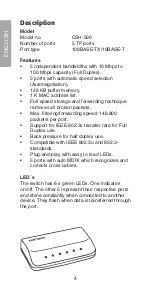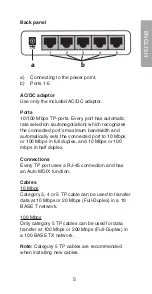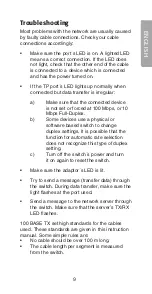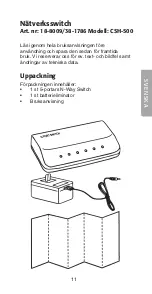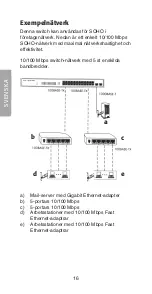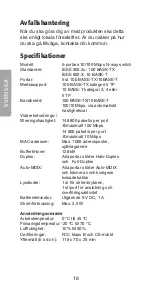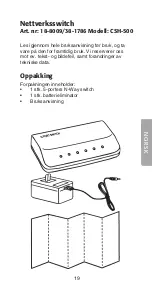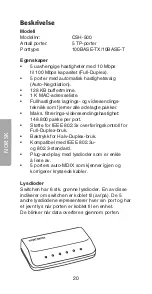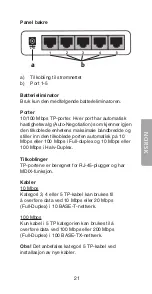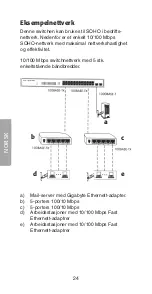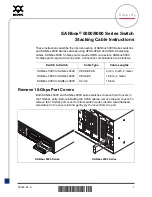
8
E
N
G
LI
S
H
Troubleshooting
Most problems with the network are usually caused
by faulty cable connections. Check your cable
connections accordingly:
•
Make sure the port´s LED is on. A lighted LED
means a correct connection. If the LED does
not light, check that the other end of the cable
is connected to a device which is connected
and has the power turned on.
•
If the TP port´s LED lights up normally when
connected but data transfer is irregular:
a)
Make sure that the connected device
is not set or forced at 100 Mbps, or 10
Mbps Full-Duplex.
b)
Some devices use a physical or
software based switch to change
duplex settings. It is possible that the
function for automatic rate selection
does not recognize this type of duplex
setting.
c)
Turn off the switch´s power and turn
it on again to reset the switch.
•
Make sure the adaptor´s LED is lit.
•
Try to send a message (transfer data) through
the switch. During data transfer, make sure the
light flashes at the port used.
•
Send a message to the network server through
the switch. Make sure that the server’s TX/RX
LED flashes.
100 BASE TX set high standards for the cables
used. These standards are given in this instruction
manual. Some simple rules are:
•
No cable should be over 100 m long.
•
The cable length per segment is measured
from the switch.




